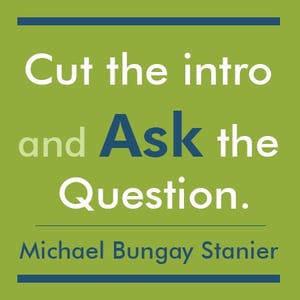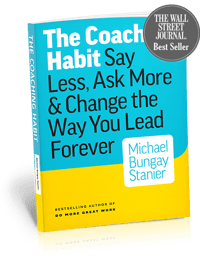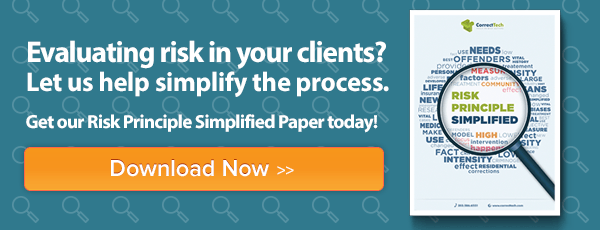 When considering where to start formulating a practice model, I happened upon The Coaching Habit: Say Less, Ask More and Change the Way You Lead Forever. I love the title. It is so packed full of important concepts; coaching, habits, listening, asking, changing you, leadership and the future. Wow, if that’s the title, imagine all of the ideas covered in this brilliantly simple book by Michael Bungay Stanier. While in the past I’ve questioned the actual importance of coaching vs. the rise of the rhetoric and number of coaching books, after reading this book I am a believer. If you read one book about coaching, make it this one.
When considering where to start formulating a practice model, I happened upon The Coaching Habit: Say Less, Ask More and Change the Way You Lead Forever. I love the title. It is so packed full of important concepts; coaching, habits, listening, asking, changing you, leadership and the future. Wow, if that’s the title, imagine all of the ideas covered in this brilliantly simple book by Michael Bungay Stanier. While in the past I’ve questioned the actual importance of coaching vs. the rise of the rhetoric and number of coaching books, after reading this book I am a believer. If you read one book about coaching, make it this one.
Bungay Stanier starts with a brief overview of coaching, including the following sentence, “The essence of coaching lies in helping others and unlocking their potential.” Sounds like Motivational Interviewing. Oversimplified? Of course. And exactly what I was looking for as the backbone of a practice model. A system that is structured but flexible and simple but powerful. It can be learned relatively quickly and used as a launching pad to more sophisticated models, if needed.
Keeping things simple in a complicated process is always best. Here's how to do it.
After an outstanding and brief discussion about the nature of habits and asking the right questions, The Coaching Habit revolves around seven questions:
The Kickstart Question: “What’s on your mind?”
I’ve been a therapist and supervised trainees for approximately three decades and believe the greatest weakness for most therapists, including myself, is how to start a session. It almost always goes something like this, “So, how’s it going?” or “How’s your week been?” Both of which are in invitation for small talk. While it typically leads to a focus, it takes longer than it would with a more skillful opening.
The AWE Question: “And what else?”
Most people, especially offenders, are uncomfortable laying out their real issue of concern without some process of throwing out safe topics first. “The Broncos looked flat this week.” “Living the dream.” “Nothing to write home about.” Small talk is not bad but focus is better. Asking, “And what else?”, several times will more likely lead to the client approaching the real issue on their mind and heart. Note: This is not a one time question. It is often added to each of the questions below.
The Focus Question: “What’s the real challenge here for you?”
When there is a problem, most people are so focused on solving the problem that they are likely focused on the first problem that comes to mind not the real problem. This question makes the client stop and think about the “real challenge” and assumes that the way they have initially presented the problem may not be the heart of the matter. Note: Adding the “for you” is not an accident. Without it, most people will focus on what someone else needs to change. Obviously, a waste of time.
The Foundation Question: “What do you want?”
Quoting Peter Block, the chapter begins with the idea that as a change agent, your task is “giving people the responsibility for their own freedom.” Our criminal justice system has generally erred more on the side of behavioral compliance and practitioner advice (see discussion below of The Advice Monster) than on allowing people to figure out what they actually want and focus on that. This question is likely to surprise clients who are more used to being told what they should want rather than being asked what they do want. Therefore, it may be a more difficult question than it appears on the surface.
The Lazy Question: “How can I help?”
This is probably the easiest question to forget to ask. We all want to help so badly that after hearing the real challenge and the desire of the client, it is tempting to jump in with the solution. (As the author notes, giving advice with a question mark on the end is not really a question.) It is okay to offer advice the answer to this question is requesting advice, but unsolicited advice invariably results in resistance. In bold letters, the author states, “What do you think I should do about…?” is the cheddar on the mousetrap. You would think letting someone else do all of the work would be easy. It ain’t.
The Strategic Question: “If you’re saying ‘Yes’ to this, what are you saying ‘No’ to?”
If you are saying “yes” to a meeting on Monday morning at 9 am, you are saying “no” to another meeting, golf, sleeping in, breakfast out or surfing the web at that time. If you are saying “yes” to getting sober, what else are you saying “yes” and “no” to. A “no” gives the boundaries to a “yes.” Behavioral change involves many tough choices. Tough choices are all about trade offs between “yes” and “no.” This question will probably need more explanation than the others. The answer to this question provides the focus for homework or next steps.
The Learning Question: “What was most useful for you?”
While people learn differently, generally speaking they do not learn simply by hearing. They don’t even learn simply by doing. People learn most and best when they are presented with the opportunity and space to reflect on the process of the learning experience. This question intentionally assumes that you were helpful and focuses the recall process on how you were helpful rather than whether or not you were helpful. It is not about patting yourself on the back. It is how people learn. In other words, how the brain changes.
 That’s it. These seven questions are a great training tool for new practitioners. After mastering these questions and the process of asking the right question at the right time, you can move on to more specialized models like skills training, motivational enhancement and mindfulness (all of which are ultimately included in the practice model I am slowly but surely presenting).
That’s it. These seven questions are a great training tool for new practitioners. After mastering these questions and the process of asking the right question at the right time, you can move on to more specialized models like skills training, motivational enhancement and mindfulness (all of which are ultimately included in the practice model I am slowly but surely presenting).
If you don’t have time to read the whole book (you really do!), at least read the part about The Advice Monster. It was my favorite part of the book and presented in such a way that it allows various practitioners to challenge each other in a fun way without being confrontational or judgmental. It is also worth your time to check out Michael Bungay Stanier’s company web site, boxofcrayons.biz . I will go into greater detail in brief blogs about each of the above questions in the coming days.



